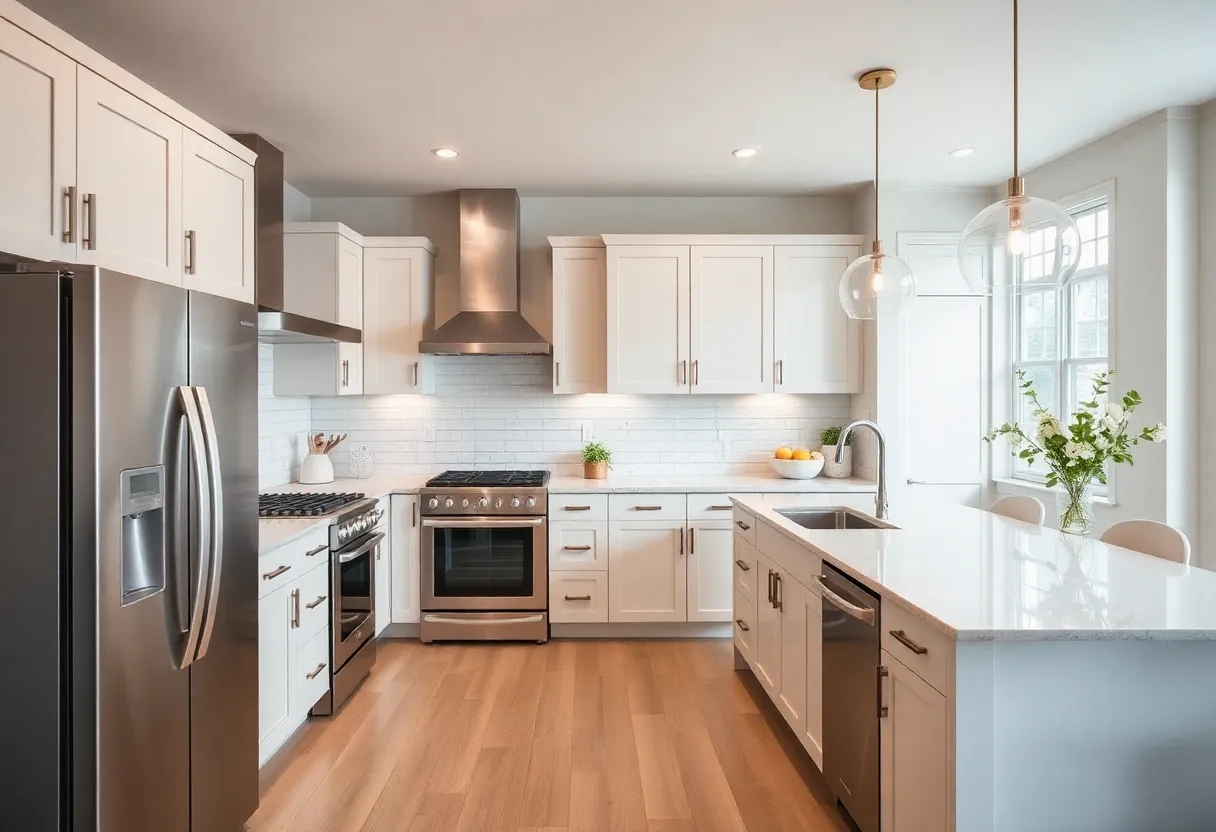How to Remodel a Kitchen: A Comprehensive Guide to Planning and Execution
Embarking on a kitchen remodel can be both exciting and daunting. This guide provides a detailed roadmap for how to remodel a kitchen, focusing on essential planning and execution strategies.
1. Assess Your Need for a Remodel
Before diving into the renovation process, it’s important to establish the reasons behind your kitchen remodel. Consider whether your kitchen is outdated, insufficient in size, or lacks modern appliances. This self-assessment will help shape the direction of your project.
2. Set a Realistic Budget
A budget is a crucial part of any remodel. Start by determining how much you can spend. Include costs for materials, labor, and unexpected expenses. It’s advisable to set aside an additional 10-20% of your budget for unforeseen issues. Research costs for cabinets, countertops, flooring, and appliances early in the planning process to avoid budget overruns.
3. Create a Functional Layout
The kitchen triangle—comprising the stove, sink, and refrigerator—should guide your layout design. Optimize the flow and functionality of the space by ensuring easy access between these key areas. Consider your daily cooking and entertaining activities when designing the layout.
3.1. Common Layouts
- U-Shaped: Maximizes counter space and storage.
- L-Shaped: Provides an open feel, ideal for smaller spaces.
- Galley: Efficient for narrow kitchens.
- Island: Enhances workflow and offers additional seating.
4. Select Materials and Finishes
Your selections will greatly impact both aesthetics and functionality. When selecting materials, prioritize durability and maintenance. The following categories warrant attention:
4.1. Cabinets
Choose cabinets that align with your design vision while providing sufficient storage. Popular options include solid wood, laminate, and MDF.
4.2. Countertops
Popular materials include granite, quartz, and butcher block. Evaluate their maintenance needs and durability before making a decision.
4.3. Flooring
Options range from tile to hardwood. Your choice should consider both durability and ease of cleaning.
4.4. Lighting
Incorporate a mix of ambient, task, and accent lighting to create a well-lit environment. Consider under-cabinet lighting for added functionality.
5. Hire the Right Professionals
If your remodel involves structural changes, plumbing, or electrical work, hiring professionals is essential. Obtain multiple quotes and check references. Look for licensed contractors with experience in kitchen remodeling. Clear communication will ensure your vision is accurately executed.
6. Plan for the Unexpected
During a remodel, issues may arise. Anticipate potential problems such as hidden water damage or outdated electrical systems. Having a contingency plan in place will help mitigate stress.
7. Execute the Remodel in Phases
Breaking the project into phases will help maintain momentum and minimize disruptions. Key phases typically include:
7.1. Demolition
Remove existing fixtures and finishes. Exercise caution and ensure safety measures are in place.
7.2. Structural Work
Make necessary modifications. This could include moving walls, windows, or doors.
7.3. Install Systems
Rework plumbing, electrical, and HVAC systems as needed. Compliance with local codes is critical.
7.4. Cabinetry and Countertops
Install cabinets first, followed by countertops. Precise measurements are essential for a seamless fit.
7.5. Finishing Touches
Apply paint, install backsplash, and add flooring. Ensure that all appliances are functional and properly installed.
8. Finalize and Enjoy Your New Kitchen
After completing your remodel, conduct a thorough walkthrough. Inspect all installations and make any necessary adjustments. Your new kitchen is complete, and it’s time to enjoy the fruits of your labor.
Conclusion
Planned effectively, a kitchen remodel can transform your space into a functional, aesthetic environment tailored to your needs. By following this guide on how to remodel a kitchen, you can navigate each step confidently, ensuring a successful and rewarding project.








